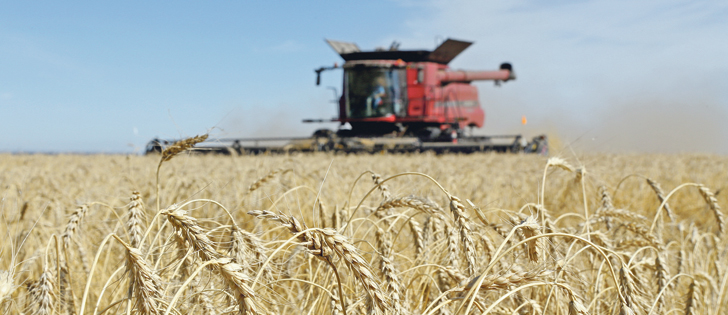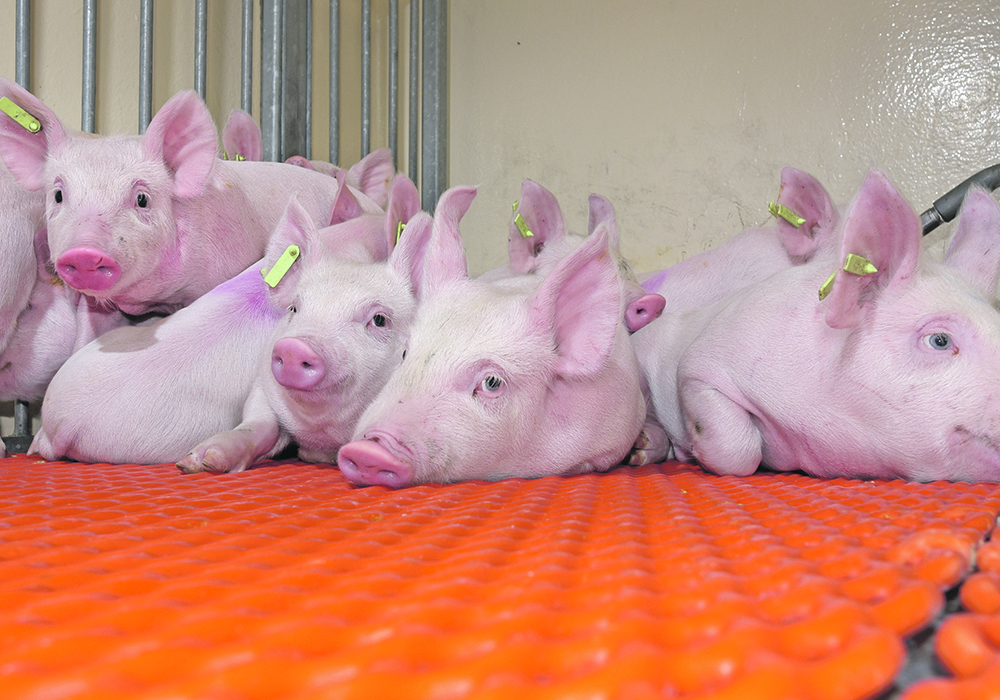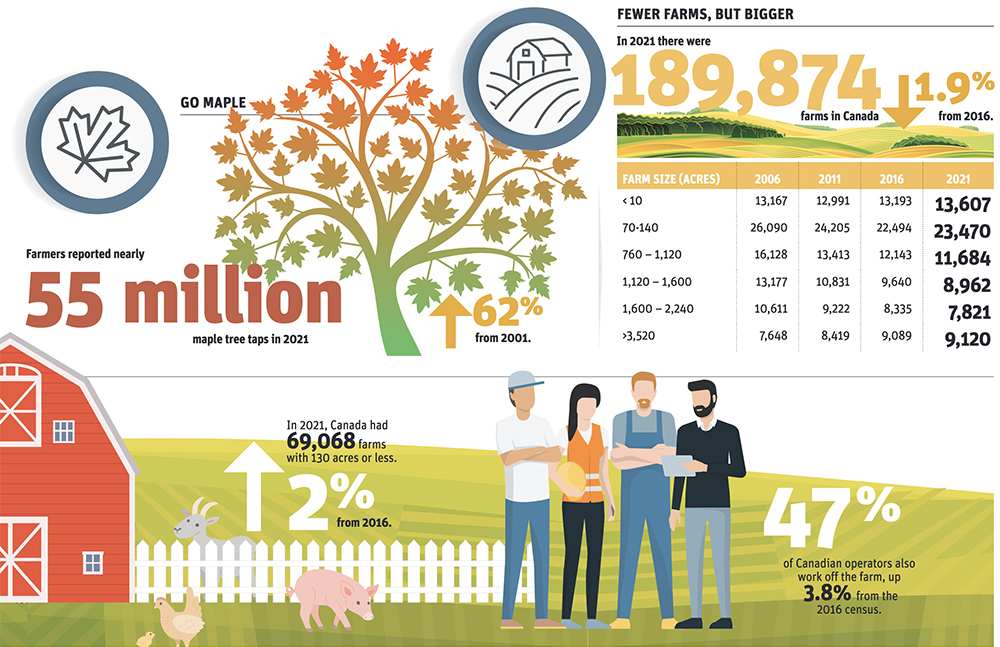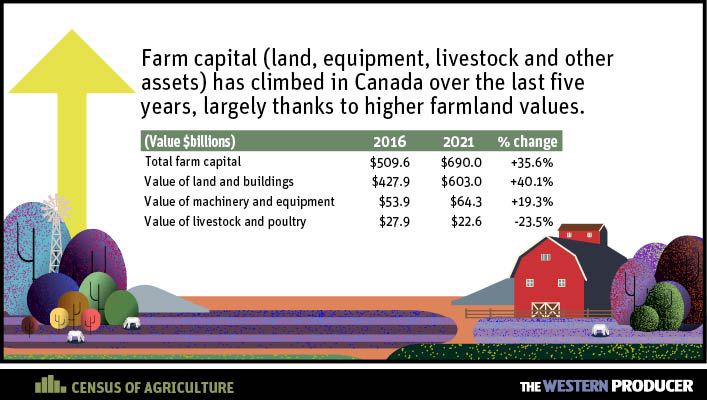A few decades ago, Western Canada’s vast grain growing area was known to many as the breadbasket of the world.
Wheat was king in the West, and all other crops were minor players by comparison.
But times have changed.
Today, prairie farmers are more inclined to grow crops that make oil, margarine and soup rather than crops that produce flour, bread or beer.
It’s a trend that’s confirmed by data in Canada’s 2016 Census of Agriculture.
According to census data, spring wheat plantings in Canada have dropped by 40 percent over the past 35 years, and annual barley plantings are less than half what they used to be.
Read Also

Farming Smarter receives financial boost from Alberta government for potato research
Farming Smarter near Lethbridge got a boost to its research equipment, thanks to the Alberta government’s increase in funding for research associations.
Spring wheat, excluding durum, was planted on approximately 25.7 million acres in 1981, but by 2016, annual plantings had dropped to 15.7 million acres, a decline of nearly 10 million acres over less than four decades.
Barley, a crop that’s loved by livestock and beer drinkers around the world, has seen a similar decline.
Across Canada, barley was planted on 13.5 million acres in 1981, but by 2016, total acreage was listed at 6.7 million acres, a reduction of more than 50 percent.
The decline in cereal acres — nearly 17 million acres of spring wheat and barley gone in the past 35 years — was offset by huge gains in canola, soybeans and lentils, census data shows.
Canadian growers planted nearly 20.6 million acres of canola in 2016, compared to just 3.5 million acres in 1981.
Soybean and lentil plantings were also up sharply. Together they accounted for 11.2 million acres last year, or 5.6 million acres each.
In 1981, combined plantings of soybeans and lentils were less than 850,000 acres.
Ken Rosaasen, an agricultural economist and farmer from Preeceville, Sask., said many factors have led to the decline in Canadian wheat acres.
But in the end, it all boils down to economics.
“Cropping decisions are based on economics and whatever crop will pencil out best in terms of net economic returns, that’s what farmers will tend to grow,” said Rosaasen, a director with the Saskatchewan Wheat Commission.
According to Rosaasen, the economics of growing wheat have been squeezed on many fronts.
Midge pressure, the spread of fusarium, grading discounts and fundamental changes in the way wheat is transported and marketed in Western Canada have all had an impact on net returns.
Transportation costs also have a larger bearing on the profitability of wheat because wheat is a relatively bulky crop and generates fewer dollars per tonne than other crops.
“The other thing to consider is that there are more crops to compete for those acres than there were (in the past),” said Rosaasen.
A few decades ago, wheat was dominant, summerfallow was second and canola was a small specialty crop.
Today, canola commands more acres than any other crop, and the new kids on the block are corn and soybeans, he said.
“We’ve seen how those crops have been moving north … and squeezing out wheat acres, especially in Manitoba but also in Saskatchewan and Alberta.”
But perhaps the biggest factor is global production.
When wheat was king in Canada, the Soviet Union was occasionally a net importer of wheat.
Today, nations that were part of the former Soviet Union, including Russia, Ukraine and Kazakhstan, are competing directly with Canada in world export markets.
“There are lots of challenges out there … but I’m optimistic,” Rosaasen said.
Advancements in agronomy, varietal development and breeding technologies will help to put some of the sheen back on wheat production.
Investments in wheat research are also increasing in Canada, which will have a positive impact on the profitability of growing wheat, he said.
Tom Steve, general manager of the Alberta Wheat Commission, agreed.
He said the establishment of provincial wheat commissions in Alberta, Saskatchewan and Manitoba has facilitated larger investments in wheat research and varietal development.
“When I took this job three years ago, I told our board of directors that I wanted to ensure that wheat is a crop of choice, not simply a rotational crop,” Steve said.
“I think we’ve seen a lot of long-term planning that has come into play in the last few years that will help us to ensure that wheat is a competitive cropping option.”
Steve said increased producer investments, combined with new private sector wheat breeding programs, bode well for the future of wheat production on the Prairies.
Canada is not the only country that has seen a decline in wheat acreage, he added.
Annual planting of cereal grains has also been declining in the United States.
In 1981, the U.S. planted its biggest wheat crop ever with total acreage all of types of wheat, in-cluding durum, listed at 88.3 million acres.
In 2016, total U.S. wheat plantings were estimated at 46 million acres, a drop of nearly 48 percent over 35 years.


















